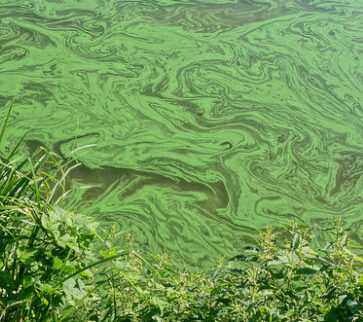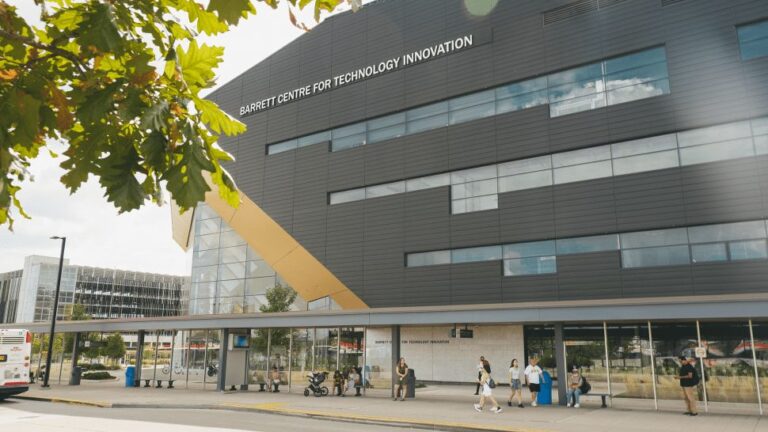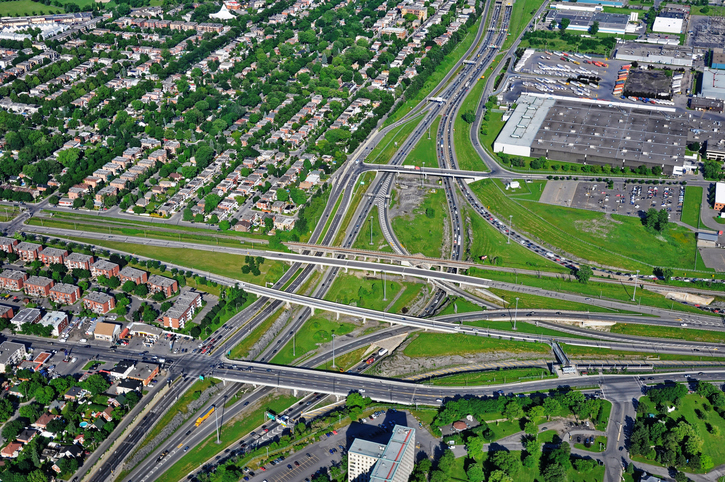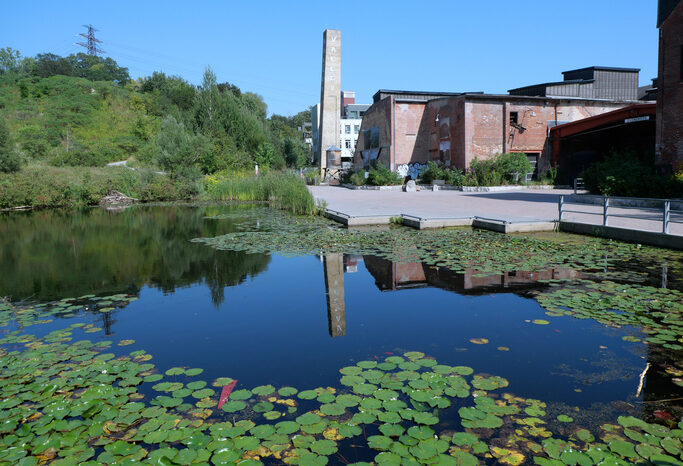Monday, June 30, 2025
The Gordie Howe International Bridge project, an engineering feat that symbolizes cross-border cooperation and sustainable development, was honoured with the “Best Large Project” award at the 2023 Brownie Awards.
Hosted by the Canadian Brownfields Network (CBN) and Actual Media Inc., the Brownie Awards celebrate excellence in brownfield redevelopment across Canada. In 2023, the awards program recognized a diverse range of projects, from community-led initiatives to large-scale infrastructure undertakings like the Gordie Howe International Bridge.
To execute a project of this magnitude requires the kind of gumption exhibited by the bridge’s namesake, Canadian hockey great Gordie Howe, who led the Detroit Red Wings to four Stanley Cup victories.
This monumental project earned a hat trick — with its successful public-private partnership, sustainable infrastructure design, and legacy of community engagement — that has forever changed the landscape of Windsor, Ontario, and Detroit, Michigan.
The vision behind the international P3 project
The Gordie Howe International Bridge is more than just a bridge; it represents a once-in-a-generation $5.7 billion public-private partnership (P3) designed to transform multiple Canadian brownfield sites into a landmark of progress.
Spanning 853 metres with a tower height of 220 metres, it is set to become the longest cable-stayed bridge in North America and the 10th longest in the world. The project’s ambitious scope and scale required collaboration between the Windsor-Detroit Bridge Authority (WDBA), Bridging North America (BNA), the Michigan Department of Transportation (MDOT), and various other stakeholders.
The Gordie Howe International Bridge is designed as a single-span structure with six lanes for vehicular traffic and a multi-use path for pedestrians and cyclists. The bridge features a clear span of 853 meters, with no piers in the water, ensuring unobstructed passage below.
The Canadian Port of Entry spans 53 hectares, while the U.S. Port of Entry covers 60 hectares, making them among the largest ports of entry in North America.
The bridge connects Ontario’s Highway 401 and Michigan’s Interstate 75, providing seamless cross-border transportation. The project also includes local road improvements, such as new road and pedestrian bridges, widened roads, and reconfigured interchange ramps to accommodate the increased traffic.

Noteworthy achievements related to brownfield redevelopment include the following:
- the project has strategically acquired all land (majority being brownfields) needed for the Canadian Port of Entry (POE) and Bridge
- the bulk of earthworks is complete, which required extensive remediation and due care measures both within the design and construction phases
- it is a P3 benchmark project showcasing innovative approaches to obtain capital financing for the purpose of economic and ecological restoration.
Canadian land acquisition, remediation and due diligence
The Canadian point of entry is approximately 130 acres (53 hectares), and the Canadian Bridge Lands is approximately 54 acres (22 hectares), a majority of which consisted of brownfields with the most notable being a former coal-fired generating station and its associated coal-ash dump.
Brownfield redevelopment environmental measures undertaken for land acquisition, design and construction included: environmental site assessments, inspections, investigation, abatement, demolition, removal activities, monitoring, sampling, security, frequent stakeholder meetings and reporting. Contamination managed specific to the Canadian components included coal tar/ash, foundry waste, slag, petroleum, VOCs, PCBs, heavy metals, USTs, railroad ties, tires, debris piles, buried building debris, asbestos, and solvents.
As part of Early Work activities prior to P3 construction, Windsor-Detroit Bridge Authority (WDBA) excavated approximately 215,000 cubic meters (m3) of coal-ash impacted soil and placed it in an engineered stockpile on-site with a demarcation layer and vegetated clean cap in 2018, allowing the brownfield to be redeveloped. Furthermore, WDBA managed underground obstructions including decommissioning several abandoned exploratory bedrock wells under artesian conditions. Portions of the site, including the bridge right of way were capped with clean fill as a Risk Management Measure (RMM) in preparation for Bridging North America (BNA) to start construction.
Clayton Sereres, the senior director of environment with the WDBA, explained that during construction, the project continues to utilize innovative technologies to track soil quantities both on and off site and, since 2015, all soil management has followed Ontario Excess Soil Guidelines as they evolve, with a goal of maximizing soil reuse on-site.
“In total, and since BNA began construction in 2018, the project has reused approximately 25,000 m3 of soil on-site and sent approximately 120,000 m3 off-site for beneficial reuse,” states Sereres. “Electronic constraint maps are shared across the project, identifying items such as permit conditions, groundwater, and soil quality, aiding construction crews in proper management.”
A catalyst for sustainable regional development
The construction of the Gordie Howe International Bridge is expected to create thousands of jobs in Ontario and Michigan, providing economic benefits to local businesses and communities while supporting the economies of both Canada and the United States by enhancing the fluidity and resiliency of the Windsor-Detroit trade corridor.
Once operational, the bridge promises to create permanent jobs for its operation and maintenance, further contributing to the region’s economic growth.
Initially scheduled for completion in November 2024, the project faced unprecedented challenges due to the COVID-19 pandemic. Differing restrictions in the U.S. and Canada, combined with the complexities of large-scale construction, led to a revised completion date of September 2025.
Despite these setbacks, the project team successfully minimized delays, demonstrating the resilience and dedication of all involved.
As a testament to the project’s community focus, the WDBA extended the Gordie Howe International Bridge Community Benefits Plan by one year, with an additional $3 million allocated for regional investments in Sandwich, West Windsor, Delray, and Southwest Detroit.
“We adopted a robust risk management strategy to safeguard the project’s financial viability. Our financial planning includes mechanisms to address unforeseen contingencies, ensuring that the project will continue to thrive in the long term,” said Sereres.
As the bridge prepares to open in 2025, it will undoubtedly become an iconic landmark, demonstrating the power of innovative infrastructure development in transforming communities and fostering international cooperation.
Once completed, the Gordie Howe International Bridge project will be a high-performance sustainable building and infrastructure project, designed for resource efficiency and cost effectiveness in construction and operation with an emphasis on green building and infrastructure strategies and processes, including the integration of products, components, and systems, that improve building performance and significantly reduce energy consumption.
To learn more on the progress of the Gordie Howe International Bridge, click here.
To learn more about the Brownie Awards and how to nominate projects for 2024, visit Brownie Awards.
Note: Those who provide nominations by August 30 will be entered into a prize draw!

Reya Shreya Rai is an editorial intern for Environment Journal. She is a writer and a student of Contemporary Journalism at Centennial College.
Featured image credits: WDBA.











